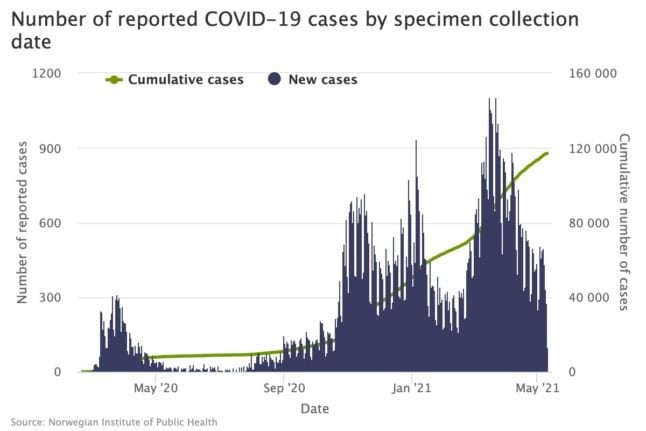The Scandinavian country’s economy, which is expected to end the year as Europe’s strongest, swelled by a much better-than-expected 2.1 percent compared to the previous three-month period, and year-on-year the growth was even steeper, at 6.9 percent, Statistics Sweden said.
The latter is the highest gross domestic product growth rate since the statistics agency began its quarterly measurements in 1970, and “is most probably the highest since 1950,” Peter Buven, an analyst with the statistics agency, told the TT news agency.
Swedish Prime Minister Fredrik Reinfeldt hailed the growth figures, which he described to TT as “very strong in an environment where many others in Europe have deep problems.”
However, he stressed the necessity of showing “humility, since Sweden is very exposed by its dependance on exports to the world around us, which is seeing a completely different kind of development.”
In light of the current Irish banking catastrophe and deepening concern about other eurozone economies, “it is difficult to estimate how long (this strong growth) will last,” he acknowledged.
Meanwhile, Buven pointed out that the strong GDP growth figures announced Monday were “of course due to the deep drop we experienced last year.”
In 2009, Sweden saw its economy shrink a full 5.3 percent, but according to Mats Dillen, the head of Sweden’s National Institute of Economic Research (NIER), the country’s GDP is now back at its pre-crisis 2008 level.
“The financial crisis is looking even deeper now than we thought before. That means things are looking even better this year, as we emerge from a negative situation and see a powerful boost upwards,” he told the TT news agency.
A few months ago, NIER forecast that Sweden would register 4.3 percent growth this year and 3.4 percent in 2011, but after seeing Monday’s statistics, Dillen said “for the current year, we will probably have to significantly revise up the expected growth.”
“We will probably see growth above five percent this year,” he said, adding that he would not yet make any new estimates for next year, since “we also need to take into consideration the international development.”
The Swedish growth figures, which already soundly beat analyst expectations in the second quarter, were again far better than expected in the July-to-September period.
According to a poll by the Dow Jones Newswires, analysts had anticipated a 1.3-percent hike compared to the second quarter and an increase of 5.6 percent compared to the third quarter of 2009.
Statistics Sweden meanwhile slightly revised down the growth numbers for the the April-to-June period, showing that Sweden’s GDP grew 4.5 percent year-on-year. Quarter-on-quarter, the number remained at 1.9 percent.
Contributing to the strong third-quarter growth, according to the statistics agency, was a 3.5-percent increase in household consumption expenditures and a 1.8-percent jump in government consumption expenditures.
Changes in inventories meanwhile alone contributed to 2.9-percent of the GDP increase, Statistics Sweden said.
Sweden, which emerged from recession in the second quarter of 2009 and saw growth quickly pick up in the first quarter of 2010, now has one of Europe’s strongest growth rates.
Like Reinfeldt, Finance Minister Anders Borg, who has been largely credited with the Scandinavian country’s dramatic turn-around, also cautioned Monday against allowing the strong growth figures to lead to “hubris.”
“We must remember that when countries explode, as we have seen in Iceland and Ireland, this has usually been preceded by extreme confidence. Things have looked good and one has been afflicted by hubris. But we will not let that happen to us,” he told reporters in Stockholm.
“It is extremely important that we keep our public finances in order,” he added.



 Please whitelist us to continue reading.
Please whitelist us to continue reading.
Member comments